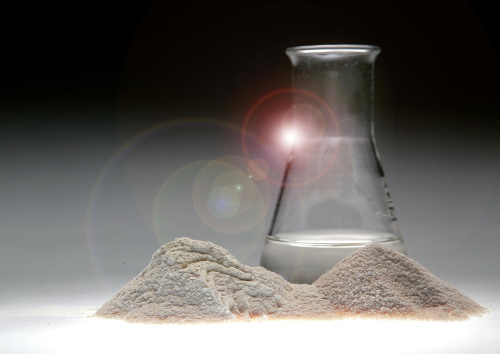
Rapid methods for food quality control

Optical sensor technology for rapid quality assessment
Quick quality control along the entire food chain
The introduction of innovative measurement systems into practice marks an important step toward digitizing and optimizing quality control along the entire food chain – from agricultural production to the finished product. At Fraunhofer IVV, we develop and implement optical sensor technologies that enable fast, precise, and non-destructive quality assessment. These systems can be used at various points in the process chain – in goods receipt, during processing, in storage, or directly in the field during production and harvesting.
Advantages of rapid optical tests
- Fast and non-destructive analysis of food and agricultural products
- Cost-effective sensor concepts for research and industry
- Seamless integration into existing quality control processes
- Can be used along the entire process chain – from production to storage
Combination of infrared spectroscopy and imaging measurement technology


Our sensor concepts are based on infrared spectroscopy (IR) for analyzing the chemical composition of food. Using specially developed, cost-efficient systems, we can perform precise measurements at a fraction of the cost of conventional IR spectrometers. The technology reveals important information that is normally hidden from the naked eye.
Advanced analysis using imaging techniques
The use of cameras makes it possible to integrate infrared spectroscopy into imaging processes and provide users with direct visual feedback. In addition, other important properties such as size, shape, or structure can be recorded. This creates a powerful tool for fast and comprehensive quality assessment. Contaminants, adulterations, or minor quality deviations can be reliably and quickly detected as early as the goods receipt stage.
Application in food production and agriculture
In food production, quality assessment at the touch of a button can help optimize production processes and reduce food waste through timely use, further processing, or alternative utilization methods.
In agriculture, measurements can be taken directly in the field in a non-destructive manner to optimize crop management or determine the optimal harvest time.
Gas sensor technology as an extended quality control measure
In addition to optical analysis, we use gas sensor technologies to detect volatile organic compounds (VOCs). These provide valuable information about the ripeness, freshness, and shelf life of food or agricultural products. The combination of different sensor technologies enables targeted, data-based quality control across the entire value chain.
We support companies in integrating rapid methods into their quality control processes in both the food industry and agriculture.
Research projects on quality control using infrared spectrometry

Food scanners for verifying food authenticity
In the completed international BMEL/BMLEH project "BaoQuality - Quality improvement and more efficient use of baobab tree (Adansonia digitata L.) products to improve food security in sub-Saharan Africa," an infrared spectrometer was used to reliably detect the adulteration of baobab powders with rice flour, thereby establishing a cost-effective rapid method for ensuring product safety. To enable a quick transfer of the developed methodology into application, the results were published without access barriers in the International Journal of Food Science and Technology
(https://ifst.onlinelibrary.wiley.com/doi/full/10.1111/ijfs.16313).

Food scanner for determining shelf life
As part of the joint project “FoodScanner – Non-destructive measurement method for rapid quality assessment and shelf life estimation of food using food scanners” funded by StMELF (Fraunhofer IVV, Fraunhofer IOSB, Weihenstephan-Triesdorf University of Applied Sciences, Grafenau Technology Campus), the use of compact NIR (near-infrared) spectrometers for rapid quality assessment and shelf life estimation was investigated on two selected foods (minced meat and tomatoes). Among other things, varying storage tests were carried out on packaged minced meat, while simultaneously determining the microbiological quality and selected chemical parameters (e.g., water, fat, and protein content). Based on the measured infrared spectra and the application of statistical methods, a correlation to the microbiological properties was established, which enabled an estimation of the microbiological quality.

Application of infrared spectroscopy for quality assessment
In the completed BMLEH project “SmartGrape – Application of AI-based measurement systems for characterizing raw materials in viticulture,” infrared spectroscopy was used to assess the quality of grapes delivered to wine cooperatives. Using two measuring devices developed by the project consortium in conjunction with AI-based evaluation, quality-relevant parameters of the grapes were determined from the information in the mid-infrared range (MIR).
 Fraunhofer Institute for Process Engineering and Packaging IVV
Fraunhofer Institute for Process Engineering and Packaging IVV